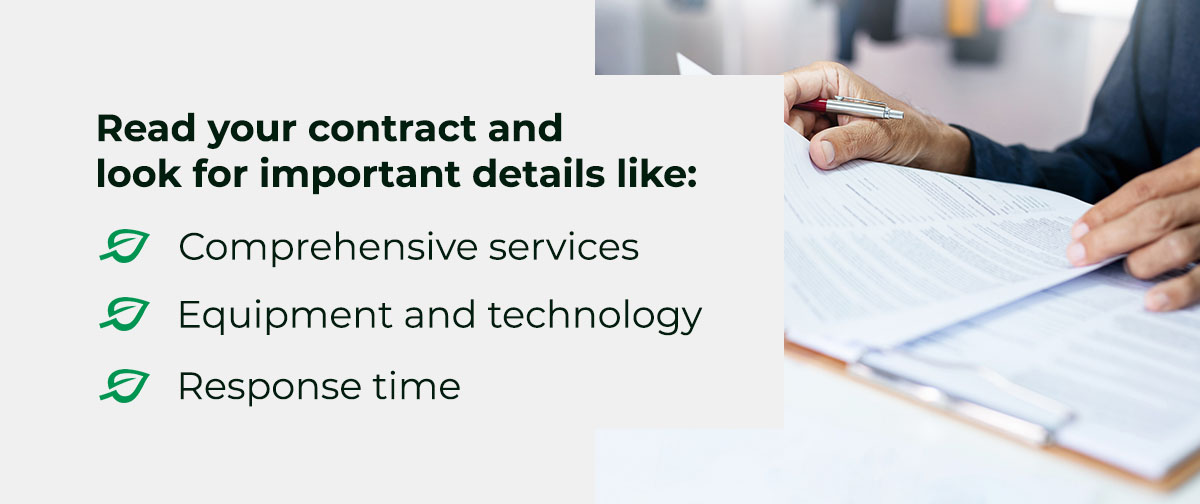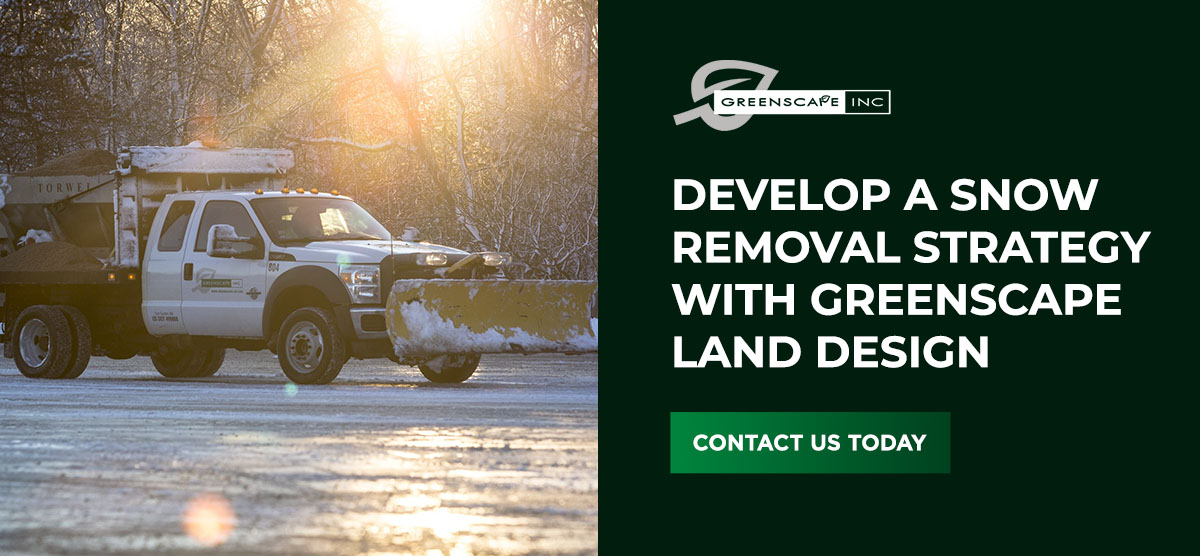
- Understanding the Impact of Lower Snowfall
- Key Considerations for Contracting Snow Services
- Adjusting Management Strategies for Lower Snowfall
- Leveraging Technology for Quick and Efficient Service
The Northeast, renowned for its picturesque winters, has faced a peculiar trend over the last few years — lower-than-average snowfall. This shift presents unique challenges for businesses when it comes to budgeting for snow services. Maintaining a partnership with snow contractors is essential for commercial businesses in the New England area. It is important to work together to with your contractor to negotiate a contract structure that is a win win for both sides.
Access to efficient snow management services can protect your property, employees, and customers from unexpected winter storms. Snowfall is notoriously difficult to forecast due to the precise temperature and precipitation measurements, which means the importance of snow contractors cannot be overstated. Unpredictable snowfall and inclement weather require predictable snow removal services. Greenscape Land Design tailors its snow management plans to ensure maximum efficiency, but also providing a fair structure for both parties.
Understanding the Impact of Lower Snowfall
Before diving into the specifics of contracting snow services, it’s crucial to grasp the implications of reduced snowfall. The Northern Hemisphere has seen a significant decrease in snow cover for several decades. In high-latitude areas, there has also been a dramatic decline in snow-covered days, spring snow cover, and summer sea ice.
This noticeable decline in snowfall highlights the importance of flexible and strategic snow service planning. It’s important to note that unpredictable patterns play a role in securing efficient snow removal services.
Lower snowfall doesn’t mean no snowfall, and ice formation can still create hazards. Reduced snowfall may tempt you, understandably, to cut back on snow services. As a commercial business, budgeting is a top priority. However, the cost of dealing with unexpected heavy snow cover and ice can outweigh these potential savings. Weather patterns have increased the frequency of icing events, and the duration of storms, creating a different service delivery need.
Key Considerations for Contracting Snow Services
Despite the decrease in snow cover over recent years, there’s no telling when a winter storm can cover your property in snow and ice. Fortunately, you can find professional snow management contractors who value your unique needs and provide tailored solutions. Consider these primary factors when looking for a snow contractor.
1. Contract Options
A snow management partner who offers various contracts allows you to make the best decision for your commercial businesses. The most common types of snow removal contracts include:
Seasonal Contracts
These typically cover an entire winter season and ensure consistent service regardless of snowfall variability. They can offer peace of mind and budget predictability. Many of these contracts have a high ceiling, for several of the past winters, you may have been severely overpaying for services rendered. A fixed seasonal provides the client with the ultimate budgeting control, but also comes with the risk of overspending.
Tiered Seasonal Contracts
These seasonal contracts provide varying levels of budgeting based on anticipated snowfall. In a tiered contract format the client is gaining budget protection, but not overspending on lower than average winters. The provider is covered on a lower winter, for all the upfront costs of snow preparation. If the winter activity increase beyond tier 1, additional costs are involved, but again the client isn’t locked into the typical high level of a normal seasonal contract.
- Tier 1 (0-30 inches): This covers services for the initial range of snowfall and account setup costs.
- Tier 2 (30-40 inches): In an average to above-average winter, the budget moves to tier 2, but the client is still at a lower price point than a high seasonal contract.
- Tier 3 (40 inches or more): In an above-average winter, the budget would move to tier 3, which would be more in line with an average seasonal contract price.
Per-Event Contracts
Also known as pay-per-event contracts, you only need to pay when snow services are needed. This can be cost-effective during lighter winters, but it can be challenging to budget if there’s a sudden spike in snow cover. These types of contracts can also be challenging for the vendor with heavy equipment outlays, as they are incurring all of the costs for being prepared to deliver the services, without any guarantee of need. Clients run the risk of a heavy outlay on a average to above average winter. Vendors will often provide a better value if the contract is in a more guaranteed format, such as a seasonal or tiered seasonal contract.
Number-Of-Event-Based Contracts
This type of contract includes a predefined number of snow events instead of a seasonal range. This may provide a client with a lower budget spend, based on their region. For example:
- Nine-event contract: Covers snow removal for up to nine snow events.
- Twelve-event contract: Covers snow removal for up to 12 snow events.
Similar in nature to a seasonal contract, but the contract is based on a number of events, and not a inch range. A couple of big storms and push the inch range over the seasonal threshold, or a vendor may experience multiple low events, and never get close to the seasonal threshold. In this format, pricing is based on the number of events to a client, and pricing tends to be lower then a typical seasonal contract.
2. Service Scope and Quality
Before signing a contract with a snow removal company, thoroughly read your contract and look for important details like:
- Comprehensive services: Ensure the contract covers all necessary aspects, such as parking lot clearing, walkway shoveling, and de-icing.
- Equipment and technology: Inquire about the equipment used and whether the company employs advanced technology for efficient snow removal.
- Response time: Quick response is critical during snow events. Clarify the company’s response time commitments.
- Complete Event cleanup: Expectations on full completion of a storm, is the largest driver in expense and resource outlay. Snow providers will adjust resources, and response based on this expectation and it’s important to clearly define the expectation with your vendor. In a medical setting for instance, a zero-tolerance policy and constant service would be required. This would be substantially different from a industrial locations with limited foot traffic and opening hours.
A contractor who offers these services can indicate an ideal snow and ice removal partner.
3. Reputation and Reliability
The snow management company you choose will determine the type of service and reliability you receive. When searching for a snow removal contractor, do your research to ensure they have a positive, trustworthy reputation through:
- Reviews and testimonials: Research customer feedback to gauge the reliability and quality of the company’s services.
- Experience: Companies with a long history in the region are often better equipped to handle the unique challenges of northeast winters.
4. Insurance and Liability
Because snow management companies often work in hazardous conditions with low visibility, it’s important to choose a vendor who prioritizes safety. Your contractor should have the proper insurance and licensing to perform their job and adhere to safety standards. Look for:
- Proper coverage: Ensure the company has adequate insurance to cover any damages or accidents during snow removal operations.
- Clear liability terms: The contract should clearly outline the liability terms to avoid disputes.
Adjusting Management Strategies for Lower Snowfall
Given the recent trend of lighter winters, here are some strategies to optimize your snow service contract:
- Evaluate historical data: Review snowfall data from the past several years at the same time of year to make informed decisions about the level of service you need.
- Consult with experts: Snow removal companies can provide insights based on their experience and recent weather patterns.
- Prioritize critical areas: Focus on areas that must remain accessible, such as main entrances and walkways, to balance cost and safety.
Leveraging Technology for Quick and Efficient Service
Modern snow removal services often leverage technology to enhance efficiency:
- Weather monitoring systems: These systems help predict snowfall more accurately, allowing companies to prepare and respond more effectively.
- Automated alerts: Some companies offer automated alert systems to inform clients about impending services and expectations.
Develop a Snow Removal Strategy With Greenscape Land Design
Contracting commercial snow services in the Northeast amid lower-than-average snowfall requires a blend of flexibility, strategic planning, and reliable partnerships. By understanding the evolving patterns and leveraging expert advice, businesses can ensure their properties remain safe and accessible throughout the winter season.
Whether you opt for a seasonal contract to ensure comprehensive coverage, a tiered seasonal contract to match anticipated snowfall, or a per-event arrangement, staying informed and prepared is key. Embrace the beauty of northeast winters with the confidence that comes from a well-thought-out snow service strategy. Contact Greenscape Land Design today to secure your snow management plan.



